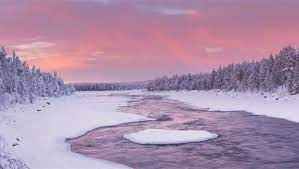Mars
"Mars: The Ultimate Frontier of Science and Discovery"
Mars is the fourth planet from the Sun in our solar system, and it is often referred to as the "Red Planet" due to its reddish appearance. Here are some key facts about Mars:
Size and Distance: Mars has a diameter of about 6,779 kilometers (4,212 miles), which is roughly half the size of Earth. Its average distance from the Sun is about 228 million kilometers (142 million miles).
Orbital Period: Mars takes approximately 687 Earth days, or about 1.88 Earth years, to complete one orbit around the Sun.

Atmosphere: Mars has a thin atmosphere consisting mainly of carbon dioxide (about 95%) and trace amounts of nitrogen and argon. The thin atmosphere makes the planet's surface conditions harsh, with low air pressure and extreme temperatures.
Surface Features: Mars has a diverse range of surface features, including volcanoes, impact craters, valleys, deserts, and polar ice caps. The largest volcano in the solar system, Olympus Mons, is located on Mars.
Moons: Mars has two small moons called Phobos and Deimos. These moons are irregularly shaped and are likely captured asteroids or captured debris from impacts on Mars.
Exploration: Mars has been the subject of numerous robotic missions from various space agencies. The most notable missions include the Mars rovers, such as Sojourner, Spirit, Opportunity, Curiosity, and Perseverance. These rovers have provided valuable information about Mars' geology, climate, and the potential for past or present life.
Potential for Life: Mars is considered a prime candidate for the search for extraterrestrial life. Although no conclusive evidence of life has been found yet, scientists have discovered signs of past water activity on the planet, suggesting that Mars might have had a more hospitable environment in the past.
Future Human Missions: There are plans for crewed missions to Mars in the coming decades. These missions would involve sending astronauts to explore the planet's surface, conduct scientific research, and potentially establish a human presence on Mars.
It's worth noting that the information I provided is accurate up until September 2021, and there may have been new discoveries or developments regarding Mars since then.
Visit: https://bestpaperaward.blogspot.com/
#MarsExploration
#RedPlanet
#MarsMission
#SpaceExploration
#MartianLife
#MarsRover
#ColonizeMars
#MarsResearch
#SpaceScience
#MarsDiscovery
#BeyondEarth
#Mars2023
#Astrobiology
#MarsHabitat
#MarsFact
Facebook: https://www.facebook.com/profile.phpid=100087106114908
Twitter : https://twitter.com/bestpaperaward
Pinterest : https://in.pinterest.com/bestpaperaward
Linkedin : https://www.linkedin.com/in/esha-gupta-18b2b4245
Instagram: https://www.instagram.com/eshagupta__2022/
Surface Features: Mars has a diverse range of surface features, including volcanoes, impact craters, valleys, deserts, and polar ice caps. The largest volcano in the solar system, Olympus Mons, is located on Mars.
Moons: Mars has two small moons called Phobos and Deimos. These moons are irregularly shaped and are likely captured asteroids or captured debris from impacts on Mars.
Exploration: Mars has been the subject of numerous robotic missions from various space agencies. The most notable missions include the Mars rovers, such as Sojourner, Spirit, Opportunity, Curiosity, and Perseverance. These rovers have provided valuable information about Mars' geology, climate, and the potential for past or present life.
Potential for Life: Mars is considered a prime candidate for the search for extraterrestrial life. Although no conclusive evidence of life has been found yet, scientists have discovered signs of past water activity on the planet, suggesting that Mars might have had a more hospitable environment in the past.
Future Human Missions: There are plans for crewed missions to Mars in the coming decades. These missions would involve sending astronauts to explore the planet's surface, conduct scientific research, and potentially establish a human presence on Mars.
It's worth noting that the information I provided is accurate up until September 2021, and there may have been new discoveries or developments regarding Mars since then.
Visit: https://bestpaperaward.blogspot.com/
#MarsExploration
#RedPlanet
#MarsMission
#SpaceExploration
#MartianLife
#MarsRover
#ColonizeMars
#MarsResearch
#SpaceScience
#MarsDiscovery
#BeyondEarth
#Mars2023
#Astrobiology
#MarsHabitat
#MarsFact
Facebook: https://www.facebook.com/profile.phpid=100087106114908
Twitter : https://twitter.com/bestpaperaward
Pinterest : https://in.pinterest.com/bestpaperaward
Linkedin : https://www.linkedin.com/in/esha-gupta-18b2b4245
Instagram: https://www.instagram.com/eshagupta__2022/



Comments
Post a Comment